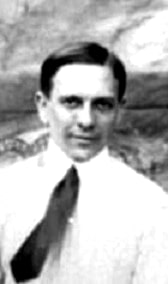I. de la Serna
Born in Guadix but raised in Granada, the city where he spent his childhood and adolescence, and in whose school period he would become friends with Federico García Lorca and Manuel Ángeles Ortiz, and as an adult, with Juan Cristóbal, Falla and Andrés Segovia. He was one of the many painters of the generation parallel to the literary Twenty-seven who settled in Paris. At the Granada School of Arts and Crafts, where he coincides with Eugenio Gómez Mir, he began his vocation that he would later complete at the San Fernando School of Fine Arts, in Madrid.
In El Prado he practices as a copyist for El Greco, Tiziano, El Bosco and Francisco de Zurbarán. It will be the latter’s still lifes and his visit in 1917 to the exhibition “Great French Impressionist Painters” at the Museum of Modern Art in the capital of Spain, who will later define part of his work. He returned to Granada until in 1921 he left for Paris, where he settled irregularly, with eventual returns to his country. In Paris he sees his work recognized by Picasso, the publisher Tériade, and the poet, dealer and animator of the Cahiers d’Art magazine, Christian Zervos. In Spain he appeared in 1932, invited by the Iberian Artists Society; this year he is hired by Manuel Bartolomé Cossío to participate in the “Museo circulante” or “Museo del pueblo” of the Pedagogical Missions, together with Blesa, Fernández Maces or Eduardo Vicente, coordinated by Ramón Gaya in the work of copyists of singular works .
On September 28, 1933 he married Susana, who was Zervos’s first wife, in Cannes, with whom he traveled to Spain from Bilbao to Madrid and from here to Granada in 1933. In 1937 he participated in the Spanish Pavilion of ‘International Exhibition from Paris. He did the last major exhibition of him in 1952. He died in Paris at the age of seventy.
There is news of two anthological exhibitions after his death, one in
1968 at the Museum of Modern Art of the Villa de Paris, and another in Spain in 1976, organized by the bank of Granada, a city in which he has a street dedicated.

